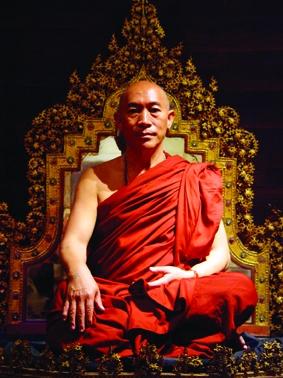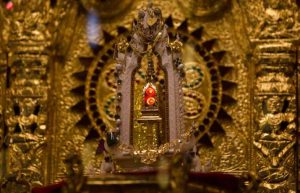
Stepping into the Golden Lobby of the Museum of World Religions in Taipei, one’s attention is immediately captured by a colorful labyrinthine design spread across the floor and decorated with symbols representing each of the world’s major religions. Under a dark blue canopy illuminated by stars, these messages are written on two golden pillars: “Love is our common truth” and “Peace is our eternal hope.” Here is a depiction of museum founder Dharma Master Venerable Hsin Tao’s vision—a world in which religions, peoples, and their highest aspirations are interconnected, where heaven and earth are bound together in harmony.
The Museum of World Religions is a testament to Ven. Hsin Tao’s deep commitment to fostering meaningful dialogue and understanding between people of different faiths and to building a better world founded on universal love and peace. Born in a poor farming village in Myanmar’s Shan State and orphaned at an early age, Ven. Hsin Tao knows only too well the suffering and misery caused by war and violence. Recruited as a child soldier by the Kuomintang guerilla army as it retreated into Burma from China, he landed in Taiwan when the army was forced to flee Burma. A chance encounter in Taiwan with the chanting of the name of the bodhisattva of compassion, Guanyin (Skt. Avalokiteshvara), marked a turning point in his life. Ven. Hsin Tao recalls: “I felt such a deep sense of connection that tears welled in my eyes. From then on, I vowed to be guided by Guanyin.”
In 1973, at the age of 25, he ordained as a novice monk under Venerable Master Hsing Yun with the Fo Guang Shan Buddhist movement in Taiwan, and entered Tsung Lin Buddhist College. However, he soon retreated from temple life to practice solitary meditation in graveyards and focus fully on his practice. He also undertook a two-year fasting retreat at the Fa Hua cave on Fu Long Mountain, in the northeast of Taiwan. As he grew in his practice, however, Ven. Hsin Tao realized that ascetic practice was not enough: “I recalled the story of Princess Miaoshan. As she was about to ascend to heaven after attaining enlightenment, she heard humanity’s cries of suffering. Filled with compassion, she returned to the world and vowed never to leave until all beings were liberated. This is the Bodhisattva Vow. I realized that my practice need not be confined to a cave. At the time, there were many cultish practices that were misleading people and causing social and personal problems. There were few genuine teachers of the Dharma. I felt that I could express my gratitude to the Buddha, the Dharma, my teachers, my parents, and all living beings by using what [knowledge] I had attained to guide others.” In 1984, therefore, he founded Ling Jiou Mountain Wu-Sheng Monastery on Fu Long Mountain. Under his spiritual guidance, the monastery now has more than 100 resident nuns and monks and has opened affiliated centers in various parts of Asia, as well as in New York and Vancouver.
Convinced of the importance of the role of religion to effect genuine change in the world, Ven. Hsin Tao then worked fervently to establish the Museum of World Religions. “This is my mission—to promote respect, tolerance, and love for peace among religious communities,” he says. “This unique museum, which opened in 2001, is more than a showcase of religious exhibits; it is a bridge linking different religions. We need to teach about religions and religious life in the world and provide instructive experiences about the variety of religious expressions as a basis for mutual understanding, peace, and love among the peoples of the world. We need to encourage people to explore the fundamental values that are common to, and at the root of, all religions. Only then can we work together to create greater understanding and peaceful interaction.
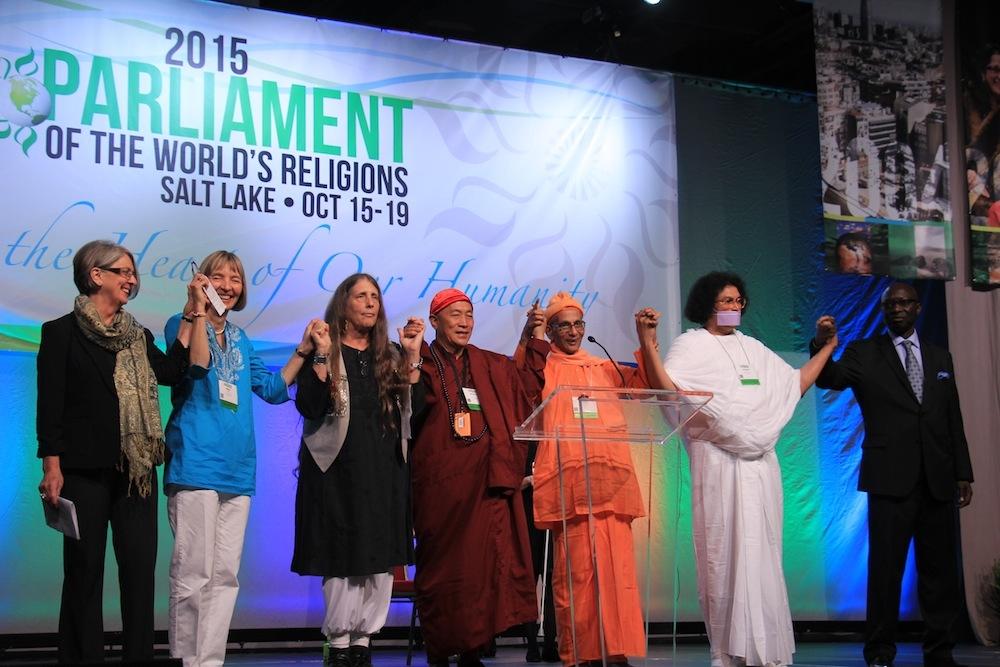
“The museum serves as an invaluable platform for people of different faiths—for religious learning, interfaith dialogue, and co-operative efforts. For example, after the 9/11 [attack] on the Twin Towers, there was a lot of anti-Muslim sentiment and much of the mainstream media portrayed Islam as ‘evil.’ We engaged moderate Muslims in dialogue with other faiths to explain what Islam really teaches. Even now in the Middle East, debate rages on the issue of religion. Violence and aggression do not solve anything. We need genuine dialogue to achieve some resolutions.”
In 2002, Ven. Hsin Tao established the Global Family for Love and Peace (GFLP), an international NGO founded on the philosophy of “Love the Earth, respect all life, awaken your spirit.”
“Through the GFLP, we promote environmental protection and the harmonious existence of all beings,” explains Ven. Hsin Tao. “Each living being is like a jewel. When these jewels are joined to form a net, they simultaneously illuminate and reflect each other, like Indra’s Net. So we have a global network of shared resources and mutual assistance not confined to Buddhists, but for all in need. When the 2004 tsunami happened, we set up an inter-religious fundraising committee comprising Buddhists, Catholics, Protestants, Daoists, and Muslims to help the victims of the disaster in Sri Lanka.”
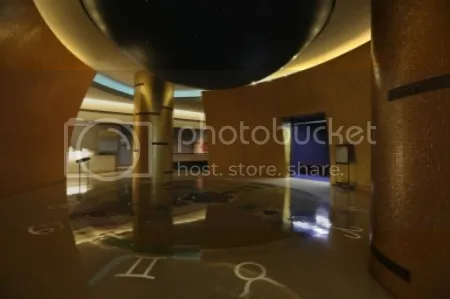
Image courtesy of the author
Ven. Hsin Tao travels the world tirelessly advocating peace and non-violence through interfaith dialogue and combining religious practices with political and social activism. In 2009, he generously supported the Council for a Parliament of World Religions in the first Conflict Resolution Program, which brought together peacekeeping teams from various regions of the world that have been affected by conflict to share models of cooperation and hope in the cultivation of peace and justice. “We can achieve this when different religions are working in the same direction and concentrating on peace work, and taking the initiative to encourage militants and politicians to give up biochemical weapons and nuclear weapons, which destroy the whole world and human beings,” he says.
But it is in his motherland of Myanmar that Ven. Hsin Tao’s heart truly lies, and for more than 20 years, he has been involved in various charity projects in the country. In 2006, in collaboration with UNICEF, he established Dayu Nursery in the Irrawaddy Delta region. After Cyclone Nargis in May 2008, the GFLP helped rebuild schools and orphanages and provided other forms of aid. In June this year, Ven. Hsin Tao took another step towards the realization of his long-held dream and deepest aspiration by building a monastic training center for 450 monks at Naung Mon in Shan State. “The people in this northern part of Myanmar have been subjected to a lot of suffering,” he notes. “The war has caused much misery, and there are many orphans and abandoned children. This is a way to express my gratitude for what I have received, especially after being bestowed the title of ‘AggaMahaKammatthanancariya’ by the Burmese sangha [which recognizes the highest level of spiritual attainment in meditation]. Myanmar is endowed with a rich Buddhist culture. There is an urgent need to preserve and protect this heritage before we lose it to rapid economic development.”
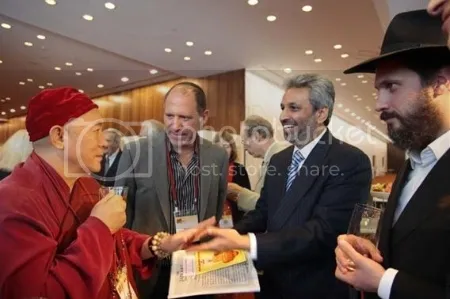
Image courtesy of the author
He sees education as playing a critical role: “We need a new generation of sangha members who are multilingual, trained, knowledgeable, and capable of using modern technology to spread Buddhism. Mahar Kusalar Yarma Monastery at Naung Mon will serve as a shining example of learning in the Nalanda spirit to nurture monks and nuns of the finest caliber, scholastically and morally, and who are committed to protecting and propagating the Dharma in the modern age. In addition, it will be a focal point for all faiths to share their contemplative practices and grow together—an institution where people from different religious background can come together, exchange and explore ideas, and find common ground to work together for all humanity.” Ultimately, as Ven. Hsin Tao emphasizes, “Real peace can only be attained when we all develop inner peace.”
See more


